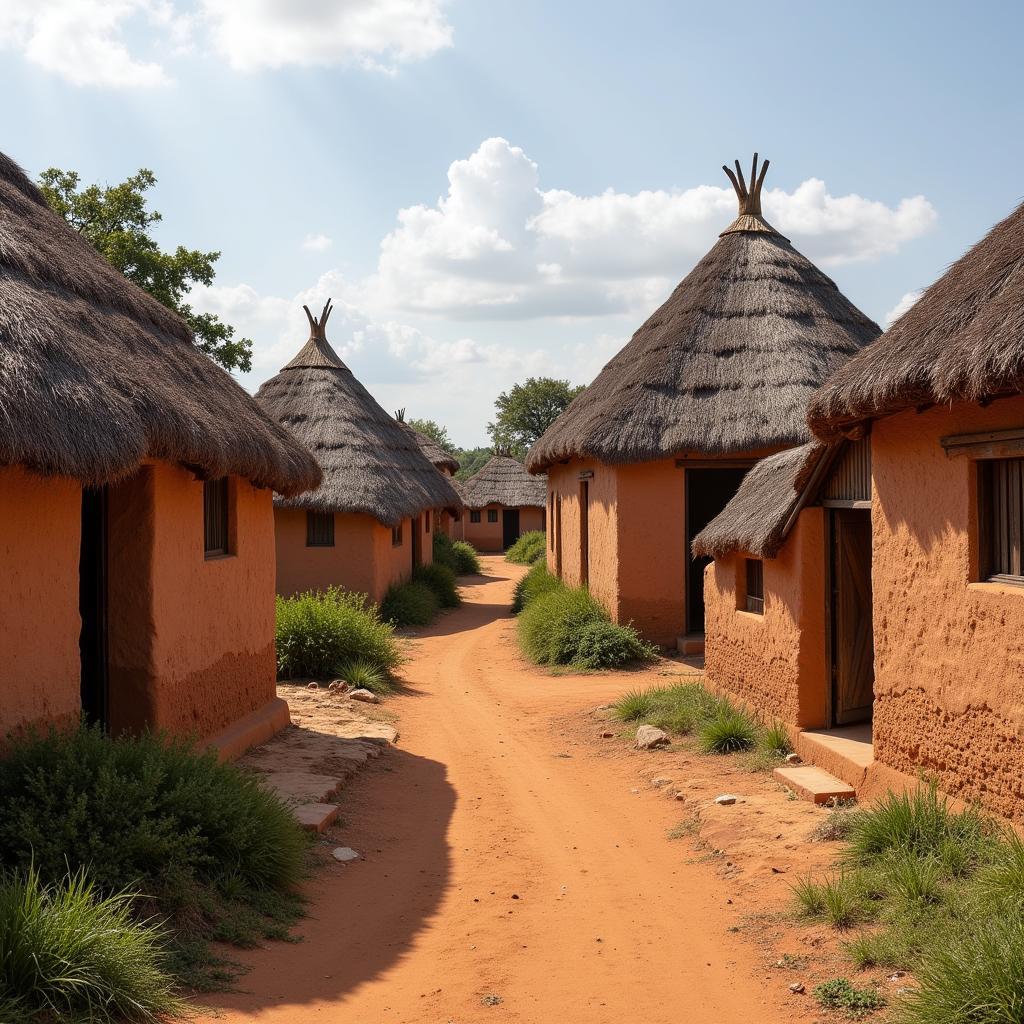The African Crested Porcupine: A Majestic and Misunderstood Creature
The African Crested Porcupine, scientifically known as Hystrix cristata, is a fascinating creature that roams the savannas, grasslands, and forests of Africa. Often misunderstood due to their prickly exterior, these nocturnal animals play a crucial role in their ecosystem and possess unique characteristics that make them truly remarkable. This article delves into the intriguing world of the African crested porcupine, exploring its habitat, behavior, diet, and the myths and realities surrounding its quills.
A Closer Look at the African Crested Porcupine’s Appearance
The African crested porcupine is the largest rodent in Africa and one of the largest in the world. They are easily identifiable by their unique and impressive array of quills, which are essentially modified hairs made of keratin, the same protein that makes up human hair and nails. These quills cover their entire body, offering a formidable defense against predators.
African crested porcupines are surprisingly agile and quick on their feet, despite their bulky appearance. They are typically black or dark brown in color, with white bands across their body. This coloration serves as camouflage, helping them to blend into the shadows at night.
Habitat and Distribution of the African Crested Porcupine
African crested porcupines are adaptable creatures and can be found in a variety of habitats throughout sub-Saharan Africa. They prefer rocky outcrops, grasslands, and woodlands, often seeking shelter in burrows, caves, or abandoned termite mounds. These burrows can be quite extensive, with multiple entrances and chambers. african crested porcupine habitat
These rodents are particularly well-suited to dry and arid environments and can survive for extended periods without water, obtaining the moisture they need from the vegetation they consume.
The African Crested Porcupine’s Nocturnal Lifestyle
African crested porcupines are primarily nocturnal animals, emerging from their burrows under the cover of darkness to forage for food. This behavior helps them to avoid predators and the heat of the day. They are solitary creatures, except during the breeding season, and will defend their territories aggressively from rivals.
Diet and Feeding Habits
Despite their intimidating appearance, African crested porcupines are herbivores and play an important role in seed dispersal. Their diet consists mainly of roots, bulbs, fruits, bark, and fallen fruits. They are known to travel long distances in search of food, using their strong claws to dig for roots and bulbs.
Do African Crested Porcupines Eat Bones?
Interestingly, African crested porcupines have a peculiar habit of gnawing on bones. While this behavior might seem unusual for a herbivore, it’s actually an important way for them to obtain essential minerals, like calcium and phosphorus, that are crucial for their health.
Debunking Myths: The Truth About African Crested Porcupine Quills
The most fascinating aspect of the African crested porcupine is undoubtedly its quills. These modified hairs serve as the animal’s primary defense mechanism and are the source of numerous myths and misconceptions.
african crested porcupine quill characteristics Contrary to popular belief, African crested porcupines cannot shoot their quills. Instead, when threatened, they will raise their quills into a defensive posture and rattle them as a warning. If the threat persists, the porcupine will charge backward into its attacker, embedding the loosely attached quills.
These quills are barbed, making them difficult and painful to remove. While not poisonous, the quills can cause infections if not treated promptly. This effective defense mechanism has earned the African crested porcupine a fearsome reputation among predators.
The Importance of Conservation
While not currently endangered, the African crested porcupine faces threats from habitat loss due to deforestation and agriculture. They are also hunted for their meat, which is considered a delicacy in some cultures.
Efforts to educate people about the importance of conserving this fascinating species and its role in the ecosystem are crucial for ensuring its long-term survival.
Conclusion
The African crested porcupine is a testament to the diversity and wonder of the natural world. While often misunderstood, these fascinating creatures are vital to their ecosystems and possess a unique beauty that goes beyond their prickly exterior. By appreciating and understanding these animals, we can contribute to their conservation and ensure that future generations can marvel at their remarkable adaptations. african erested porcupine
FAQs about African Crested Porcupines
1. How long do African crested porcupines live?
- In the wild, their lifespan is typically around 10 years, but they can live up to 20 years in captivity.
2. How much do African crested porcupines weigh?
- Adults typically weigh between 13 to 27 kilograms (29 – 60 pounds).
3. How do African crested porcupines reproduce?
- They are monogamous and typically have one litter of 1-4 young per year.
4. What are the natural predators of the African crested porcupine?
- Lions, leopards, hyenas, and pythons are among their main predators.
5. Are African crested porcupines dangerous to humans?
- While not inherently aggressive, they will defend themselves if threatened. It’s important to observe them from a safe distance and avoid provoking them.
Need More Information?
For further inquiries and assistance regarding the African crested porcupine or other fascinating African wildlife, please reach out to us at:
- Phone Number: +255768904061
- Email: kaka.mag@gmail.com
- Address: Mbarali DC Mawindi, Kangaga, Tanzania.
Our dedicated team is available 24/7 to address your queries and provide support.




